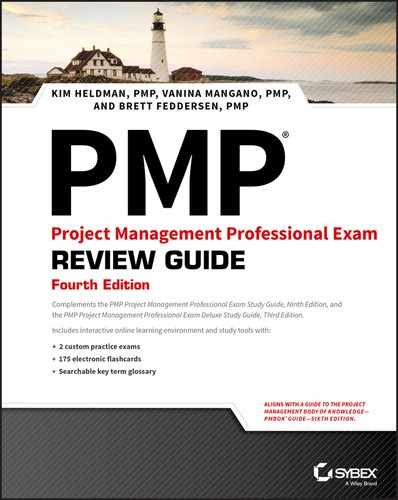Chapter 6
Planning Stakeholder Engagement and Obtaining Project Plan Approval
THE PMP® EXAM CONTENT FROM THE PLANNING PERFORMANCE DOMAIN COVERED IN THIS CHAPTER INCLUDES THE FOLLOWING:
 Develop the stakeholder engagement plan by analyzing needs, interests, and potential impact in order to effectively manage stakeholders’ expectations and engage them in project decisions.
Develop the stakeholder engagement plan by analyzing needs, interests, and potential impact in order to effectively manage stakeholders’ expectations and engage them in project decisions. Present the project management plan to the relevant stakeholders according to applicable policies and procedures in order to obtain approval to proceed with project execution.
Present the project management plan to the relevant stakeholders according to applicable policies and procedures in order to obtain approval to proceed with project execution. Conduct kick-off meeting, communicating the start of the project, key milestones, and other relevant information in order to inform and engage stakeholders and gain commitment.
Conduct kick-off meeting, communicating the start of the project, key milestones, and other relevant information in order to inform and engage stakeholders and gain commitment.
 As we covered in Chapter 3, Chapter 4, and Chapter 5, planning is an essential part of project management, regardless of what methodology or project life cycle you choose to use. In this chapter, we will cover the remaining project management processes that fall within the Planning process group, wrapping up coverage of this exam domain.
As we covered in Chapter 3, Chapter 4, and Chapter 5, planning is an essential part of project management, regardless of what methodology or project life cycle you choose to use. In this chapter, we will cover the remaining project management processes that fall within the Planning process group, wrapping up coverage of this exam domain.
Developing a Stakeholder Engagement Plan
The primary reason that a project is undertaken is to satisfy the expectations of the project stakeholders. Clearly, it is important to ensure efforts are made to identify, work with, and communicate with the appropriate stakeholders. Within the Planning process group, the Plan Stakeholder Engagement process is the key work effort for the Project Stakeholder Management Knowledge Area. The purpose of the process is to develop approaches to involve stakeholders based on their needs, expectations, interests, and potential impact on the project.
Figure 6.1 shows the inputs, tools and techniques, and outputs of the Plan Stakeholder Engagement process.
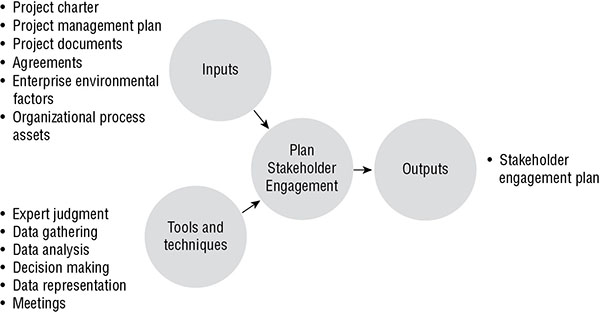
FIGURE 6.1 Plan Stakeholder Engagement process
Inputs of Plan Stakeholder Engagement
Know the following inputs of the Plan Stakeholder Engagement process:
- Project charter
- Project management plan
- Project documents
- Agreements
- Enterprise environmental factors
- Organizational process assets
Project Charter The project charter provides high-level information on the project’s purpose, objectives, and success criteria. When planning activities are carried out, this document is frequently reviewed.
Project Management Plan According to the PMBOK® Guide, to develop the stakeholder engagement plan you can use the following information from the project management plan:
- Resource management plan, which captures roles and responsibilities of the project team as well as other information regarding resource management
- Communications management plan, which documents the communication strategies selected
- Risk management plan, which details the risk thresholds and risk attitudes of stakeholders
Project Documents Information that is needed to plan engagement with project stakeholders is provided from the stakeholder register. This is a key document, as it captures additional information about individual stakeholders, including their levels of influence, authority, and interest in the project.
In addition to the stakeholder register, the following other documents may be useful:
- Assumption log
- Change log
- Issue log
- Project schedule
- Risk register
Agreements Engagement with contractors and suppliers also needs to be planned. Information on these stakeholders can be found within the signed agreements.
Enterprise Environmental Factors All enterprise environmental factors can be used within the Plan Stakeholder Engagement process. Special attention should be given to the organizational structure and culture, stakeholder risk appetites, and external stakeholder requirements. It will be important to adapt the management of stakeholders to the project environment.
Organizational Process Assets All the elements described in the organizational process assets can be used in this process. Particular consideration should be given to lessons learned and historical information.
Tools and Techniques of Plan Stakeholder Engagement
The Plan Stakeholder Engagement process includes the following tools and techniques:
- Expert judgment
- Data gathering
- Data analysis
- Decision making
- Data representation
- Meetings
Expert Judgment Using the project objectives as a guide, a project manager should apply expert judgment when considering the level of engagement required for each stakeholder. It may be necessary to adjust the level of engagement, considering the different phases of the project. In the creation of the stakeholder engagement plan, a project manager can look to the following groups, depending on specialized training or subject matter expertise these individuals might possess:
- Senior management and other identified key stakeholders
- Project team members
- Other functional units or individuals
- Project managers who have completed similar projects
- Subject matter experts in the business or project areas
- Industry groups and consultants
- Professional and technical associations
Data Gathering Benchmarking is a useful data gathering technique for developing a stakeholder engagement plan. Benchmarking involves comparing information from other, similar projects or with other projects from other organizations.
Data Analysis According to the PMBOK® Guide, data analysis techniques used in this process include, but are not limited to, the following three examples:
- Assumption and constraint analysis, used to tailor engagement strategies
- Root cause analysis, used to identify underlying reasons for existing levels of support
- SWOT analysis, used to evaluate current and possible future positions of key stakeholders
Decision Making When developing stakeholder engagement strategies, the stakeholder requirements may need to be prioritized and ranked. This is a form of a decision-making technique.
Data Representation A stakeholder engagement assessment matrix allows for a comparison between current and desired engagement levels. The current engagement level of all stakeholders should be compared to the planned levels of engagement to ensure project success. This is a critical process that needs to be performed throughout the life cycle of the project to help ensure satisfied stakeholders. According to the PMBOK® Guide, the level of engagement with stakeholders can be classified as follows:
- Unaware, where the stakeholder is unaware of the project and potential impacts
- Resistant, where the stakeholder is aware of the project but is resistant to change
- Neutral, where the stakeholder is aware but is neither supportive nor resistant
- Supportive, where the stakeholder is aware of the project and is supportive of change
- Leading, where the stakeholder is actively engaged in ensuring that the project is a success
Table 6.1 shows how current engagement can be documented using the stakeholder engagement assessment matrix, where C indicates the current level of engagement and D indicates the desired level of engagement.
TABLE 6.1 Sample stakeholder engagement assessment matrix
| STAKEHOLDER | Unaware | Resistant | Neutral | Supportive | Leading |
| Stakeholder 1 | D C | ||||
| Stakeholder 2 | C | D | |||
| Stakeholder 3 | C | D |
Aside from the stakeholder engagement assessment matrix, mind mapping is yet another type of data representation technique that aids in the development of stakeholder engagement strategies. Mind mapping involves organizing information about stakeholders together and their relationship to each other and the organization.
Meetings The stakeholder management strategy defines the level of participation needed for each stakeholder.
Outputs of Plan Stakeholder Engagement
There is one output that results out of the Plan Stakeholder Engagement process:
Stakeholder Engagement Plan This component of the project management plan identifies the management strategies necessary to effectively engage stakeholders. Adding to the information provided by the stakeholder register, the stakeholder engagement plan often provides the following information:
- Desired and current engagement levels of key stakeholders
- Scope and impact of change to stakeholders
- Interrelationships and potential overlap of stakeholders
- Method for updating and refining this plan as the project advances
Obtaining Project Management Plan Approval
With the subsidiary plans and baselines created, it’s time to bring them all together into a project management plan. The project management plan consists of a compilation of these plans and baselines and is an output of the Develop Project Management Plan process. This primary plan is presented to key stakeholders for sign-off (if required). Once the plan is approved, the team can move forward to execute it.
Develop Project Management Plan is the first process in the Planning process group, and it’s part of the Project Integration Management Knowledge Area. Although listed as the first Planning process within the PMBOK® Guide, as you can see, it is not technically the first process carried out in practice. This process defines, coordinates, and integrates all the various subsidiary project plans and baselines. The result is a project management plan document that describes how the project outcomes will be executed, monitored, and controlled as the project progresses and how the project will be closed out once it concludes.
Throughout the project, the project management plan will be updated to reflect approved project changes. It will be used as an input to many of the project management processes, and as a result of approved changes, it will also become an output of several processes.
Figure 6.2 shows the inputs, tools and techniques, and outputs of the Develop Project Management Plan process.
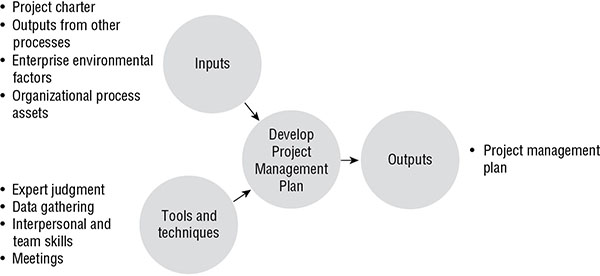
FIGURE 6.2 Develop Project Management Plan process
Inputs of Develop Project Management Plan
Know the following inputs of the Develop Project Management Plan process:
- Project charter
- Outputs from other processes
- Enterprise environmental factors
- Organizational process assets
Project Charter Based on the high-level scope outlined in the project charter, the project team can start determining which project management processes will be most beneficial for this particular project.
Outputs from Other Processes Outputs from other project management processes are used to develop the project management plan. In particular, the following outputs from the planning processes may be helpful inputs to develop the project management plan:
- Any processes used that produce a baseline
- Any processes that produce a subsidiary management plan
Enterprise Environmental Factors The following key elements of the environmental factors should be considered when choosing the processes to perform for this project:
- Standards and regulations (both industry and governmental)
- Company culture and organizational structure
- Personnel administration
- Project management information system (PMIS)
The PMIS is an automated or manual system used to document the subsidiary plans and the project management plan, facilitate the feedback process, and revise the documents.
Organizational Process Assets The following key elements of the organizational process assets should be considered within this process:
- Project management plan template
- Change control procedures
- Historical information
- Configuration management knowledge database that contains the official company policies, standards, procedures, and other project documents
Tools and Techniques of Develop Project Management Plan
There are several tools and techniques used to carry out the Develop Project Management Plan process:
- Expert judgment
- Data gathering
- Interpersonal and team skills
- Meetings
Expert Judgment The following types of expert judgment are needed to complete this process:
- Tailoring techniques
- Understanding technical and management details that need to be included in the project management plan
- Determining resources and assessing skill levels needed for project work
- Determining and defining the amount of configuration management to apply on the project
- Developing additional components of the plan as needed, based on the project
- Prioritizing the work of the project to ensure appropriate resource allocation
Data Gathering The following data gathering techniques are used to formulate ideas and solutions for what the project approach should be:
- Brainstorming
- Checklists
- Focus groups
- Interviews
Interpersonal and Team Skills Conflict management, facilitation, and meeting management are examples of interpersonal and team skills used to develop the project management plan. These various techniques help bring together diverse stakeholders and help them reach mutual understanding and get buy-in.
Meetings Meetings are often used to bring experts together, whether for workshops to develop the plan together or to hold a kick-off meeting to mark the end of planning and start of execution. Look for additional information on the kick-off meeting within this chapter.
Output of Develop Project Management Plan
The output of the Develop Project Management Plan process is the project management plan.
To put it simply, the project management plan contains all of the subsidiary management plans and baselines discussed thus far. In more detailed terms, the project management plan addresses and includes the following elements:
- Processes used to perform each phase of the project
- Life cycle used for the project and for each phase of the project when applicable
- Tailoring of results the project team defines
- Methods for executing the work of the project to fulfill the objectives
- Change management plan describing methods for monitoring and controlling change
- Configuration management
- Methods for determining and maintaining the validity of performance baselines
- Communication needs of the stakeholders and techniques to fulfill those needs
- Management reviews of content, issues, and pending decisions
The project management plan also contains multiple subsidiary plans and baselines, as described in Table 6.2 . Figure 6.3 depicts a high-level view of the contents that make up the plan.
TABLE 6.2 Project management plan summary
| Subsidiary plan or document | Description |
| Requirements management plan | This plan documents how the project requirements will be managed throughout the life of the project. It also addresses how the requirements will be analyzed and documented. |
| Scope management plan | This plan describes how scope will be identified, decomposed, validated, and monitored throughout the project. |
| Schedule management plan | This plan identifies the scheduling format, tool, and methodology that will be used for creating and managing the project schedule. |
| Cost management plan | This plan defines the criteria for planning, budgeting, estimating, and managing the costs of the project. It also identifies the cost-related formats and tools that will be used in the project. |
| Quality management plan | This plan describes how the organization’s quality policies will be implemented and addresses the following items: quality assurance, quality control, and process improvement. |
| Resource management plan | This plan documents how human resources should be defined, staffed, managed and controlled, and released from the project. |
| Communications management plan | This plan guides the communication for the project. It defines the communication requirements of the stakeholders as well as the format, type, frequency, and methods for project reports. It also lists report recipients and anything else pertinent to project communication. |
| Risk management plan | This plan defines how risk management activities will be carried out. It also outlines the budget and time allotted for risk activities, risk roles and responsibilities, risk categories, and how risks will be defined and assessed. |
| Procurement management plan | This plan describes how procurements will be managed, from make-or-buy decisions all the way through contract closure. |
| Stakeholder engagement plan | This plan identifies the management strategies necessary to effectively engage stakeholders. |
| Schedule baseline | This baseline is an approved version of the project schedule that will be used to compare and measure the planned schedule against the actual schedule. |
| Cost baseline | This baseline contains an approved budget that is used to measure, monitor, and control the planned budget against the actual amount of funds used. |
| Scope baseline | This baseline provides scope boundaries for the project and consists of the project scope statement, the work breakdown structure (WBS), and the WBS dictionary. |
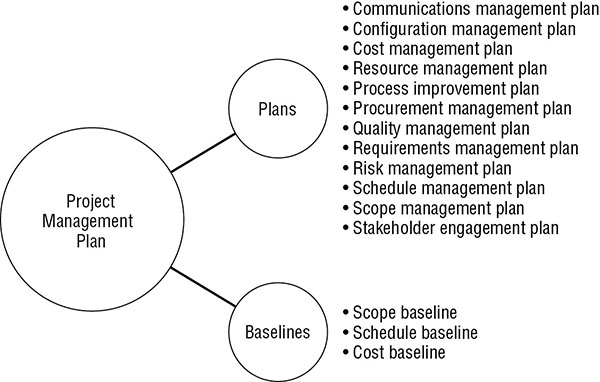
FIGURE 6.3 High-level view of project management plan contents
Conducting a Kick-off Meeting
A kick-off meeting typically occurs at the end of the Planning process, prior to beginning the project work. The purpose of the kick-off meeting is to ensure that everyone is aware of the project details and their role within the project and to announce that the project work is ready to begin. This is a great opportunity to review project milestones and other important information with key stakeholders.
Meeting Attendees
Those who attend a kick-off meeting include, but are not limited to, the following individuals:
- Project manager
- Project team members
- Customer
- Project sponsor
- Department managers
- Other key stakeholders
Meeting Topics
Discussions within a kick-off meeting include, but are not limited to, the following topics:
- Introductions of attendees
- Meeting agenda
- Review of the project management plan
Bringing the Processes Together
This chapter, along with Chapter 3, Chapter 4, and Chapter 5, covered a lot of ground, and you have now officially learned about all of the processes that make up the Planning process group. The outputs of all of these deliverables culminated in the project management plan. As you saw when reviewing the inputs of the various processes, the project management plan is a key input and is regularly updated throughout the project. Keep in mind that after it is approved and the project is baselined, changes must go through a formal change control process. Understanding that bigger picture will help you with situational exam questions as well as using the project management processes in a real-world setting.
Now that you have a strong grasp of how the outputs from various processes become the inputs for other processes, you understand why some processes must occur before others can move forward. For example, to create the project management plan, the results of the Initiating process group are required. Figure 6.4 shows this interaction between the Initiating process group and the Planning process group, the first two stages of the project’s life cycle. The relationship between the project management plan and the rest of the planning processes is just as interactive, if not more dynamic.

FIGURE 6.4 Planning process group interaction
The project management plan is used in Planning processes across nine of the ten Knowledge Areas. (The remaining Knowledge Area generates the project management plan.) The results of these planning processes are fed back into the project management plan as updates. The updates might, in turn, impact several of the other planning processes. For example, the project management plan contains the cost management plan. Any changes that are approved in the cost management plan become updates to the project management plan. As a result, these approved and updated changes could impact other planning processes that might also require that updates and changes be made.
By now, it should be clear that the project management plan is the heart of the project and that much of the project’s success can be based on the processes of the Planning process group. A common motto in the project management industry is, “A well-planned project makes for a successful project.” Figure 6.5 illustrates how the project management plan remains at the center of the Planning process group.
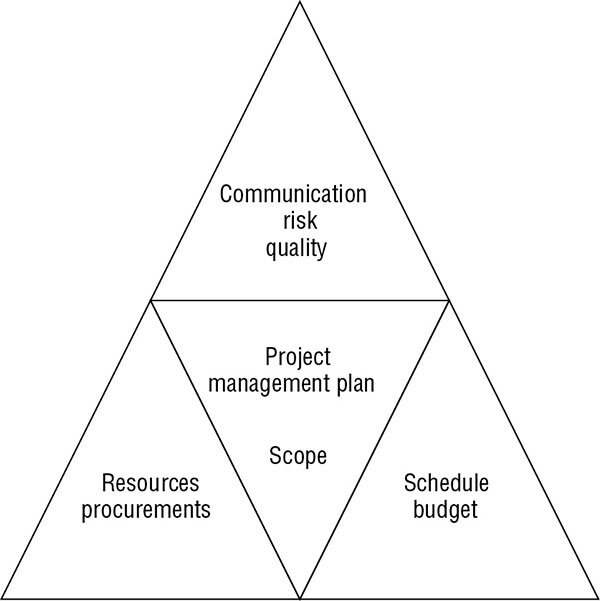
FIGURE 6.5 Planning process group triangle
In summary, the project management plan is a compilation of several subsidiary plans and baselines:
- Change management plan
- Communications management plan
- Configuration management plan
- Cost management plan
- Cost baseline
- Resource management plan
- Process improvement plan
- Procurement management plan
- Quality management plan
- Requirements management plan
- Risk management plan
- Stakeholder engagement plan
- Schedule baseline
- Schedule management plan
- Scope baseline
- Scope management plan
The change management plan, which was not previously addressed, describes how you will document and manage change requests, the process for approving changes, and how to document and manage the final recommendation for the change requests. Configuration management changes deal with the components of the product of the project, such as functional ability or physical attributes, rather than the project process itself.
Scope is also a critical element within planning because it defines the boundaries of the project and what it is that the project has set out to achieve. The project schedule and the project budget are part of the project’s foundation. These project elements play a big role in measuring and monitoring the progress of the project. The resources and purchased services and/or products complete the project’s foundation. Without the human resources, as well as the external project teams, the project could not move forward.
Guiding the project from above are communications management, quality management, and risk management—all critical elements of the project that influence and guide the project toward success. As you can see, all of these project elements are intertwined and build on one another.
Keeping the broader picture in mind, let’s go back and review what you’ve learned thus far about each of the project management Knowledge Areas covered in this chapter. You’ll find that what goes on within each Knowledge Area is connected on a high level and is structured in a logical format.
Project Stakeholder Management Knowledge Area Review
The Project Stakeholder Management Knowledge Area is concerned with identifying all of the stakeholders associated with the project, both internal and external to the organization. These processes also assess stakeholder needs, expectations, and involvement on the project and seek to keep the lines of communication with stakeholders open and clear. The definition of a successful project is one where the stakeholders are satisfied. These processes ensure that stakeholder expectations are met and that their satisfaction is a successful deliverable of the project. Figure 6.6 depicts the only planning step in the Project Stakeholder Management Knowledge Area.

FIGURE 6.6 Project Stakeholder Management Knowledge Area process interaction
As you can see, the planning processes within each Knowledge Area are highly interactive. The processes interact not just within their own respective Knowledge Areas but among the other planning processes.
Each project carries different needs, and not all of the processes will be necessary for every project. We previously touched on the fact that some processes can be combined to tailor management for a particular project to the needs of that individual project. But, as you’ve also seen, some process outputs are critical as inputs to other processes. The project management plan, which lies at the core of the Planning process group, is one of those critical outputs.
Review Questions
-
What type of risk response strategy is a project team likely to use for risks containing a low probability and impact, where no contingency is needed?
- Passive acceptance
- Active acceptance
- Mitigation
- Acceptance
-
Unaware, resistant, neutral, supportive, and leading are ways stakeholders can be classified using what data representation tool?
- Stakeholder engagement assessment matrix
- SWOT analysis
- Stakeholder engagement strategies
- Stakeholder engagement plan
-
Antwon is a system analyst on a critical project of Data Systems United, a technology consulting firm. Antwon has recently had a difficult conversation with another team member and, in frustration, asks the project manager where he can reference the team values to share with his colleague. To what document is the project manager likely to point Antwon?
- Stakeholder engagement plan
- Resource management plan
- Stakeholder register
- Team charter
-
All of the following are tools and techniques used to compile the project management plan except:
- Interviews
- Outputs from other processes
- Checklists
- Interpersonal and team skills
-
What tool computes the project model using various inputs, such as cost or schedule duration, to determine a probability distribution for the variable chosen?
- Sensitivity analysis
- Decision tree analysis
- Simulation
- Influence diagram
-
Frankfort Data Center Migration is a project that belongs to a large program responsible for the consolidation of European data centers into a single location located in Ireland. The project manager of the Frankfort project has just discovered a program-level risk that is affecting his project. What risk response strategy is he likely to use to address the threat?
- Avoid
- Accept
- Mitigate
- Escalate
-
All of the following are outputs of the Plan Procurement Management process except:
- Source selection analysis
- Make-or-buy decision
- Independent cost estimate
- Bid documents
-
Kaylee is a senior project manager of a technology startup company. After joining the company three months ago, she took on a major project with a large group of stakeholders. She has just finished facilitating a multi-day workshop to assemble risk responses for those risks identified to date. What process group is she in?
- Initiating
- Planning
- Executing
- Monitoring and Controlling
-
Data Systems United has just been acquired by Mega Data Consultants. The project manager for Mega Data Consultants responsible for integration activities has just finished the first wave of risk identification activities, producing the first iteration of the risk register. What is she likely to do next?
- Evaluate the impacts of risk prioritized and quantify risk exposure for the project
- Decide what actions to take to reduce threats and take advantage of opportunities discovered
- Describe the risks that might impact the project and document their characteristics in the risk register
- Determine what impact the identified risks will have on the project objectives and the probability that they will occur
-
A project manager is in the process of assembling the project management plan. What valid tool or technique are they likely to use to aid in successfully generating this plan?
- Interviews
- Project charter
- Organizational process assets
- Enterprise environmental factors
